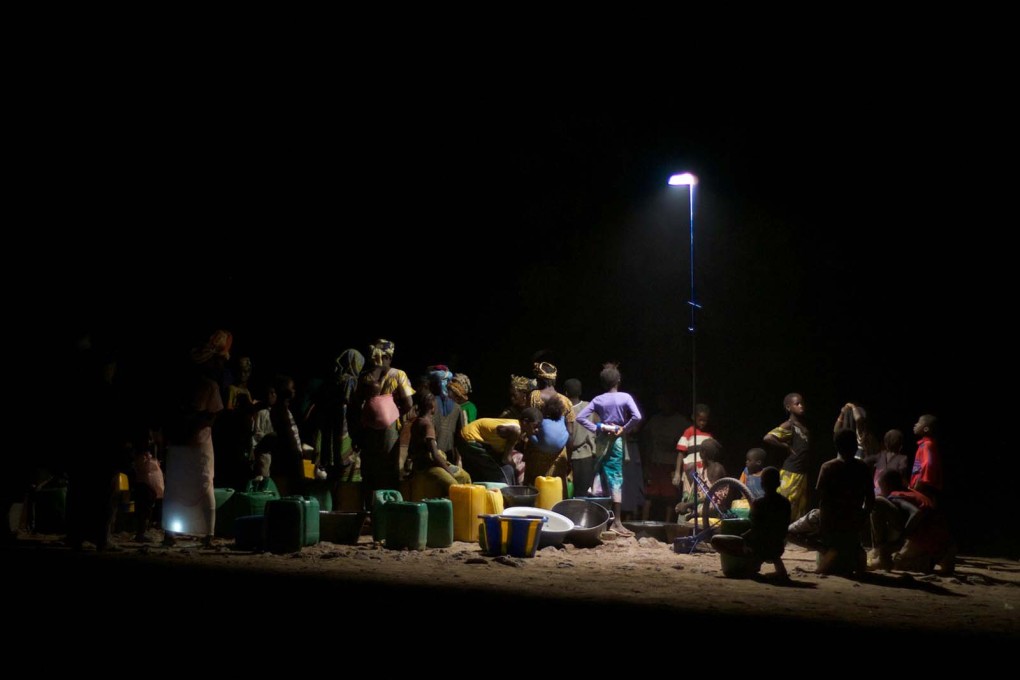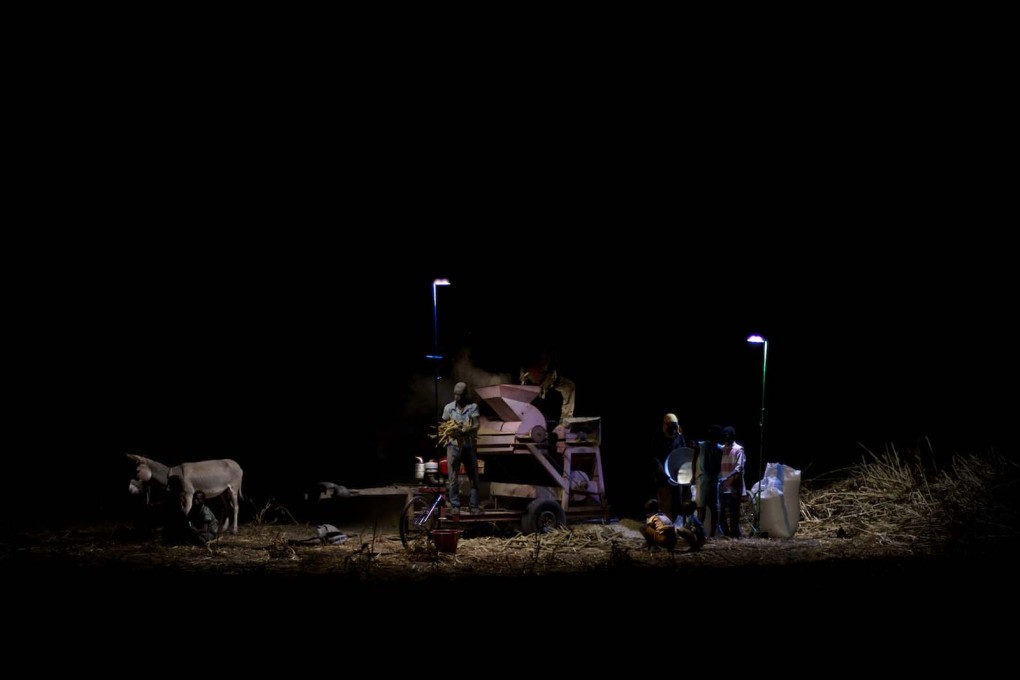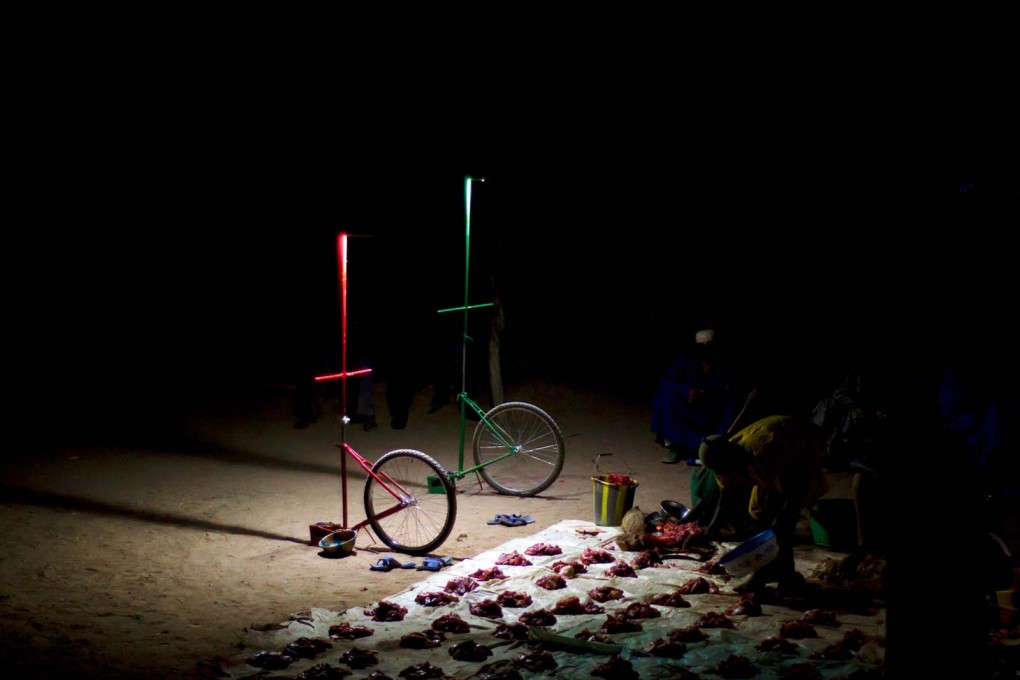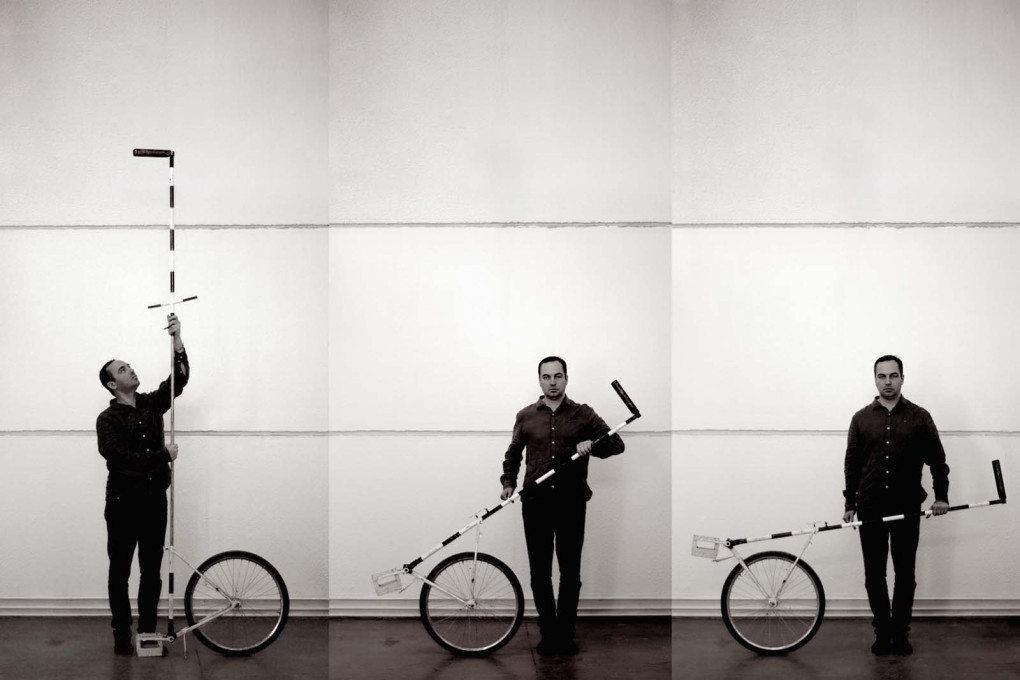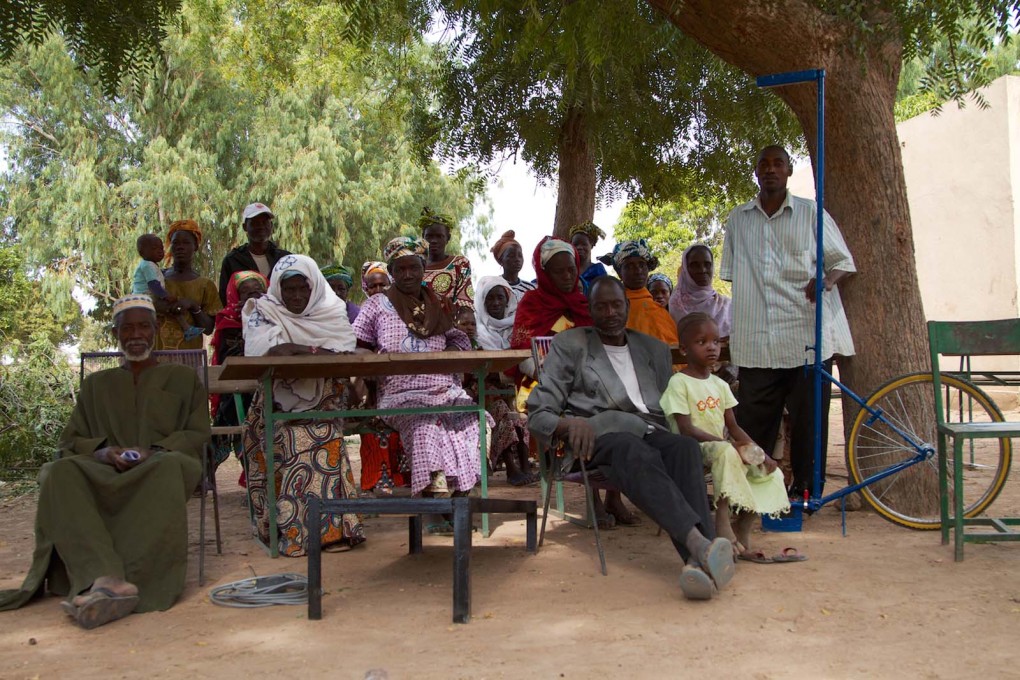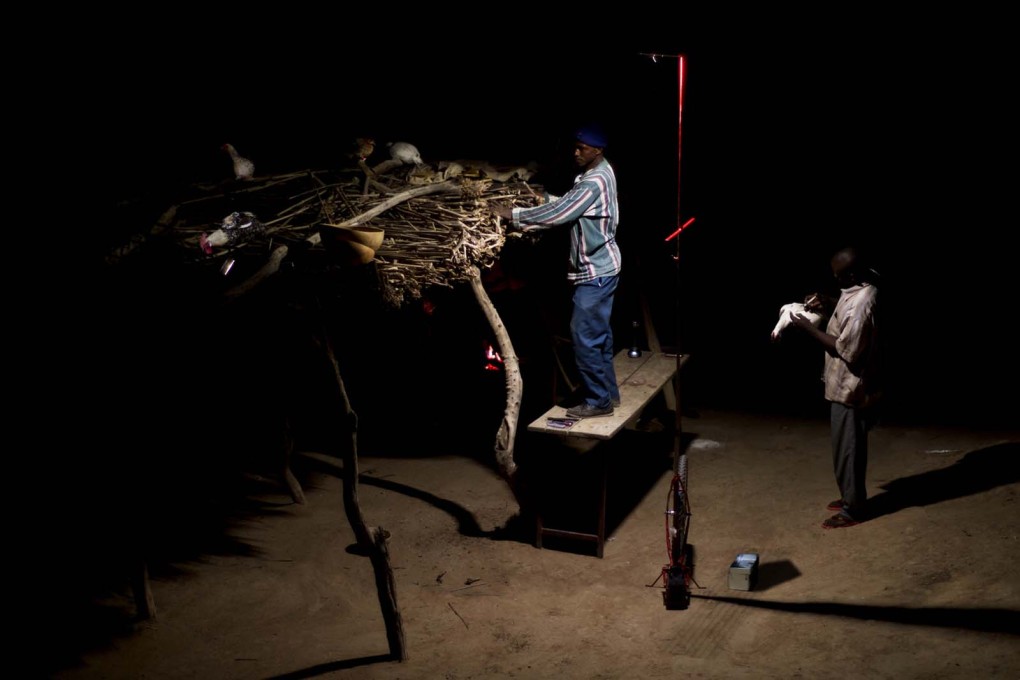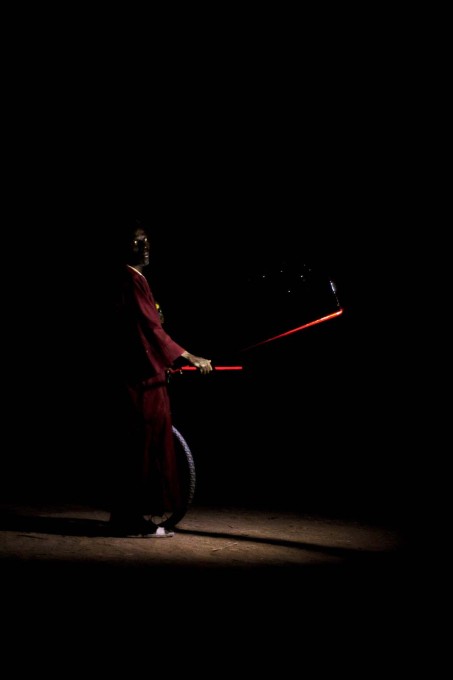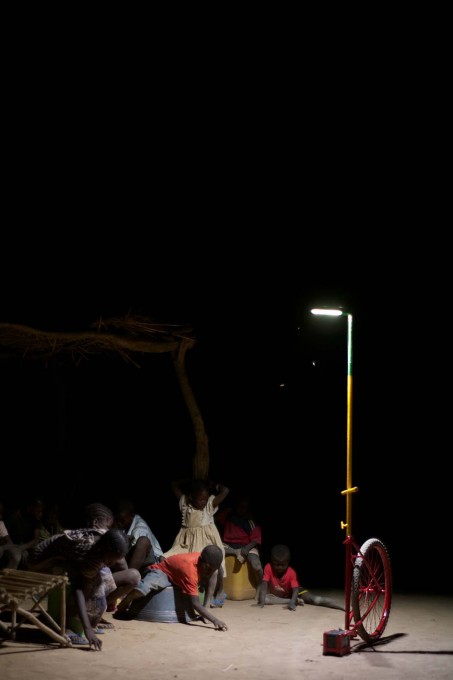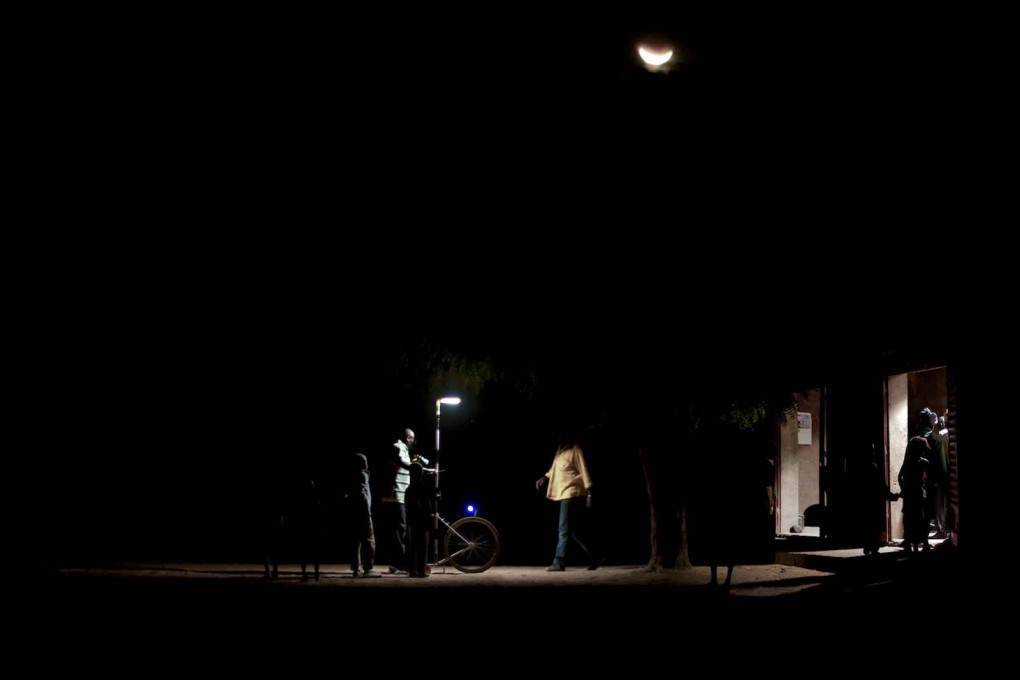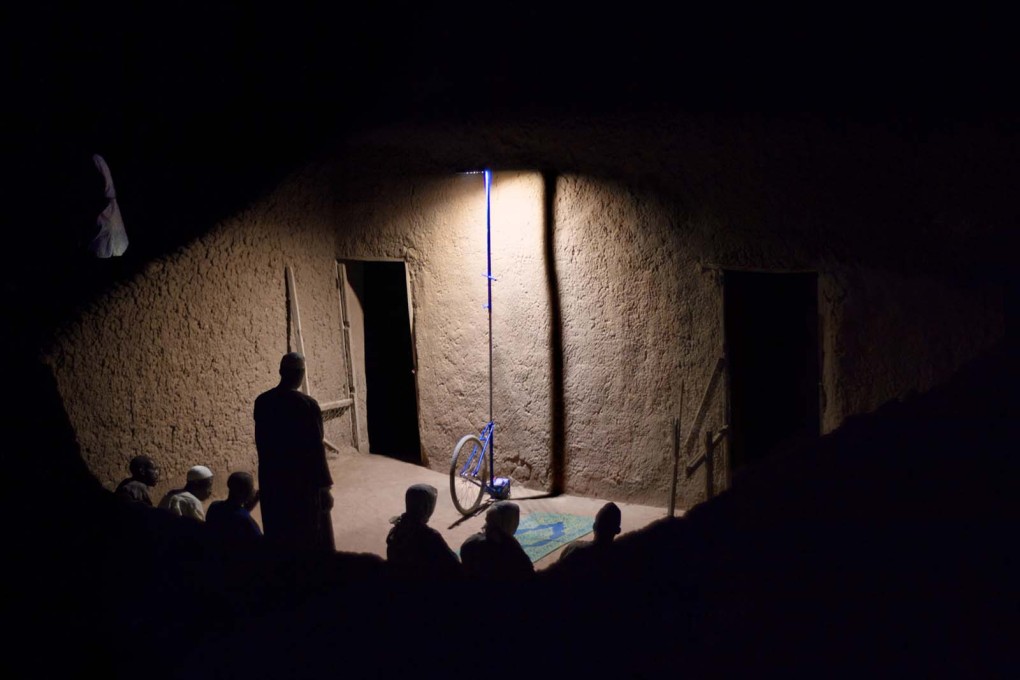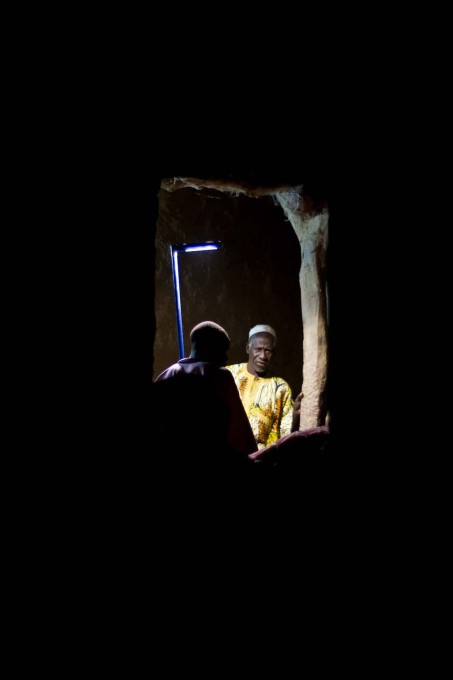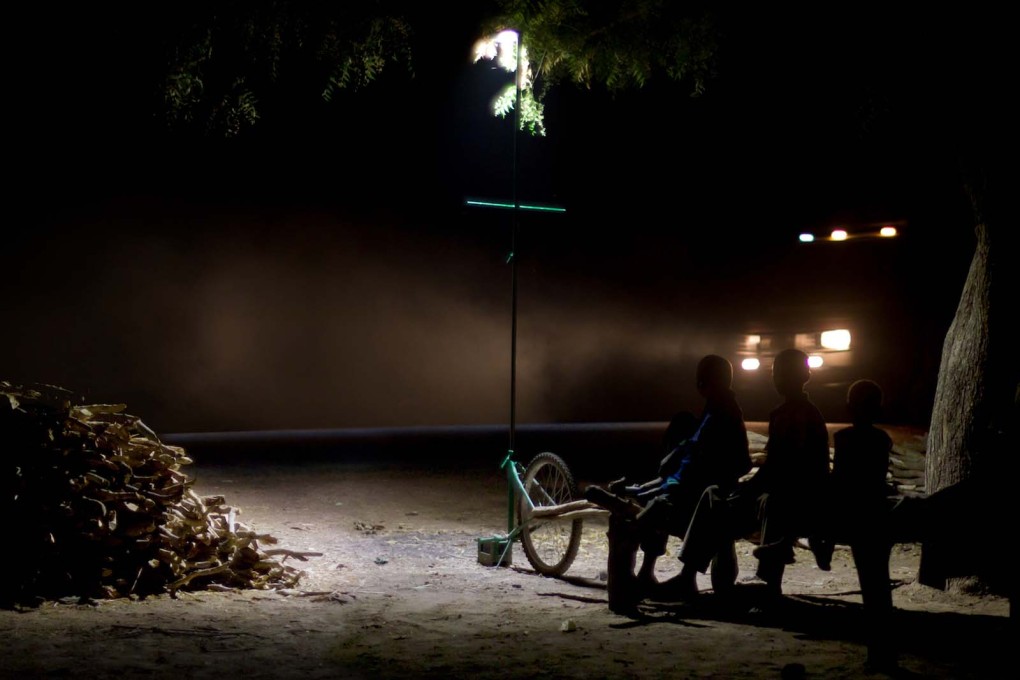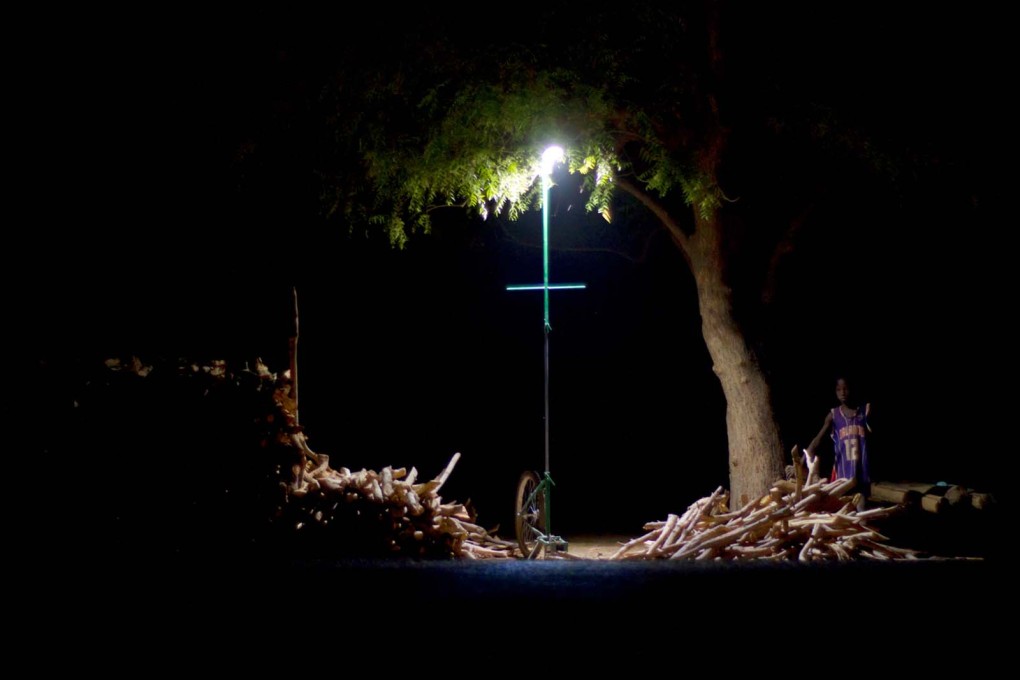While working in Mali, the Italian architect Matteo Ferroni became fascinated by how people living off-grid in rural areas there would get up in the middle of the night to work, in order to avoid the heat of the day, utilising petrol lanterns as well as battery-powered torches strapped to their heads for light. Setting out to design a more convenient, safe and communal alternative, Ferroni came up with what he describes as a “lighting tool”, constructed in part of recycled materials such as bicycle wheels and water pipes, and one which can be easily and cheaply manufactured locally. It has since been dubbed Foroba Yelen by villagers in Cinzana in south-central Mali, meaning “common good”. In her first piece for uncube – and continuing our After Dark theme for the month – Crystal Bennes talked to Matteo Ferroni about a project that he has decribed as both bringing light but also saving darkness.
In developing the Foroba Yelen light, you undertook an anthropological study exploring the cultural aspects of light in Mali. Can you expand?
When designers think about light, it’s as a technological challenge. Particularly in the developing world, the discussion is always about how to design the most efficient or most economical product.
That approach is too basic. Light has such a strong cultural meaning and the cultural aspect of light is so important. Technology can’t answer the question of light’s cultural meanings. My approach was to consider this cultural aspect of light, more than its technical side.
Did you have these ideas about light before travelling to Mali?
I’ve been curious about light as a cultural phenomena since I travelled to India in 2005. There, I saw that light was used not only to brighten a space, but also for religious purposes. When I came back to Barcelona I discovered that even in 19th-century Europe, when this technology came into our cities, we gave light a symbolic meaning, one now largely hidden.
In Mali, I was reminded of Kropotkin’s theory of mutual aid. Alongside Darwinian competition, he thought there was another, stronger force of mutual cooperation. He observed that animals with more complex social behaviour were more likely to survive.
In his book, Fields, Factories and Workshops, he tried to figure out whether human society would be able to achieve what exists in nature. He thought energy – electricity – would come to make it so. And in Mali, I found an example of Kropotkin’s hypothetical societies: rural communities who share agriculture and work in order to live self-sufficiently.
We must learn to live with less energy, and in Mali they already do. It’s natural that I thought about energy when I started to think about light.
If energy was an interest, why not work on a project in a society with high consumption? Or, are you hoping to transfer some of what you learned in Mali elsewhere?
Yes, of course. I think perhaps I could extract concepts to use in our cities. But my project is more about the cultural function. It’s about bringing light, but also about saving darkness.
The approach to the developing world, especially Africa, is that there’s always a problem. Honestly, they don’t need a light in Mali. They have light. They have energy. The way they live today, I think it’s great. Of course, there are things like healthcare that can be improved, but this is not our direct task.
What lights do people already use in these communities?
Mainly battery-powered flashlights, which are ecologically weak but anthropologically great. They work and they’re useful, worn on heads, flickering like fireflies, turning on and off to save energy. I think it’s poetic.
Then there’s the moon, which is also highly cultural. Kalo is the word for moon and month, the moon is a light, but also a way to interpret time. So, I tried to make a middle scale between the moon and flashlight: a tree of light.
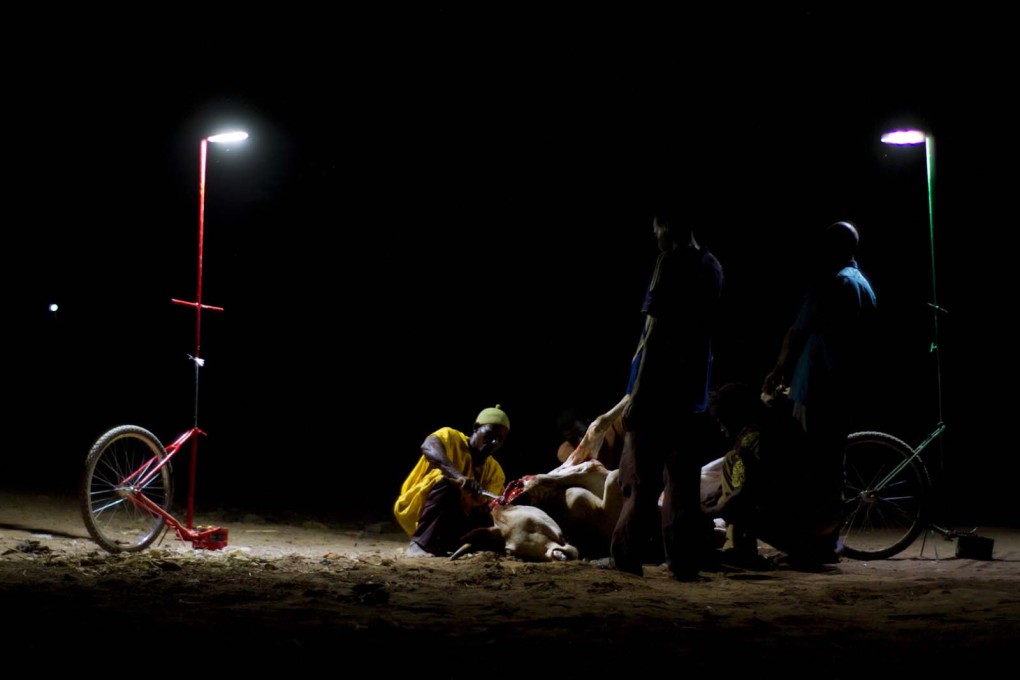
The lamp is made from old bicycle frames, hydraulic tubes, aluminium and LED modules – were there earlier prototypes using different materials? Where do you source parts?
I designed the light very quickly from a bicycle and then slowly worked out the details with local craftsmen. I approached the design more like a workflow chain. Bring together a bicycle mechanic, a blacksmith, an aluminium pot maker and a radio repairman – once the chain is organised the lamp can be made.
The most difficult component is the LED module. I knew almost nothing about LED technology, so I worked with an Italian factory to make the module. When I found out that they were just assembling parts bought in China, it made sense to try to make the module in Mali instead.
You spent a long time observing making methods in Mali before developing your lamp. How did you incorporate these observations?
When an NGO develops technology, they design something, make it and then teach people how to use it. I had time and thought it was better to train myself. Why should I train them when I can train myself?
I spent two years observing the local manufacturing processes. I didn’t want to use any tools or materials that weren’t already used. I wanted to work within the existing structures. Much of that time was spent studying donkey carts, which are complex and simple at the same time.
Instead of looking for craftsman with special skills, I looked for people making everyday things and then replicated existing processes to manufacture the lamp.
Who manufactures the lamp? How long does it take to make?
They’re made in existing workshops in the communities. I felt strongly that I shouldn’t set up special workshops. I’m an alien there, an observer, so I didn’t want to make any changes to cultural life.
Time-wise, technically it takes three days, but the open chain of craftsmen means things are never stable - maybe there isn’t any aluminium to melt or there’s a wedding. In reality, it takes about three months.
And the finances?
To date, I’ve used my own money through a foundation I set up, mainly because I couldn’t guarantee the lifetime of the lamp.
With the villages we experimented within a social contract, which I think makes the project possible. In terms of the cycle, each village has a women’s association who requests lamps from the mayor. Local young people have formed an association for manufacturing and production. Once the youth association has raised funds and organised production, the mayor distributes lamps to the women, who must pay for them in old bicycle frames within six months.
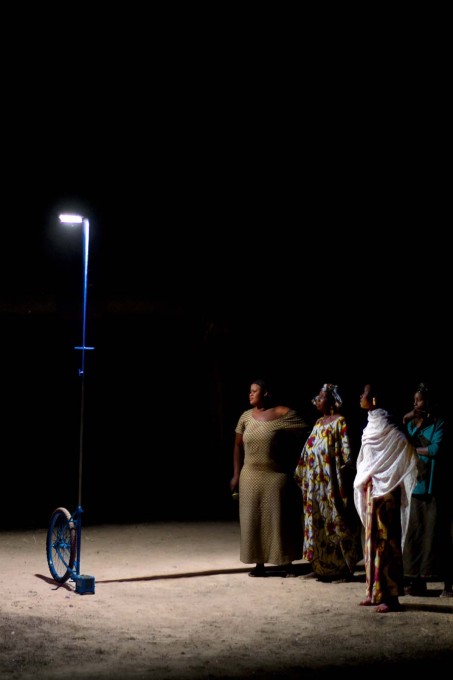
How easy is it to repair a broken lamp?
Almost all of the material can be reused, from the metal to the aluminium. The mechanical parts break most often, but they’re easiest to repair. The LED module is trickiest, as it can’t be repaired and must be replaced. It’s interesting how people fix the light. Sometimes it’s fixed as originally made and sometimes very differently.
What are the villages using the lamps for?
As a device for work, for one thing. The veterinarian will hire the lamp to do animal vaccinations at night, or a teacher will use it to do homework with children.
My concept was about providing light for activities as opposed to spaces. Instead of giving a light to the school, give it to the teacher. Not to the health building, but to the healers. Light for people with duties.
Lamps are also used to illuminate collective activities. During Ramadan, a lamp will be used in the Mosque for prayers. Or they use it for butchering meat at night, when it’s not so hot.
What is the future of Foroba Yelen?
I’m writing a handbook at the moment. Many communities and NGOs have asked for the lamps, but I don’t want to sell. It’s not a product to sell.
The book documents the whole experience, and includes technical details to replicate the lamp, as well as the conceptual framework which I think is important. The book marks the end of my involvement in the project. It can continue or not, but it now won’t depend solely on me.
– Crystal Bennes is a writer, curator and artist based in Finland. She is co-editor of independent culture and urbanism magazine Pages Of, runs the blog Development Aesthetics and is one third of the London Research Kitchen. crystalbennes.com @crystalbennes
Foroba Yelen project
Concept and design by Matteo Ferroni
Project run by Fondazione eLand
With the support of Haus der Kulturen der Welt and FAD (Fostering Arts and Design)




